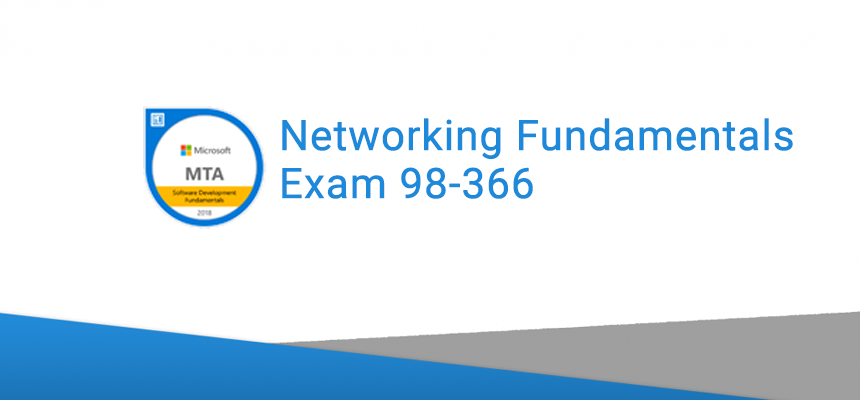MiTA 98-366 Practice Test Questions - Microsoft Networking Fundamentals
Are you preparing for your Microsoft 98-366 Exam? Passquestion MiTA 98-366 Practice Test Questions help aspiring network administrators prepare for and pass the Microsoft Technology Associate (MTA): Networking Fundamentals exam (98-366). Passquestion can promise that you can 100% pass your exam to attend MTA certification 98-366 exam.

98-366 Exam Overview - Microsoft Networking Fundamentals
Candidates for the Microsoft Networking Fundamentals certification exam are familiar with general networking concepts and technologies. Candidates should have some hands-on experience with Windows Server, Windows-based networking, network management tools, DNS, TCP/IP, names resolution process, and network protocols and topologies.For MTA Networking Fundamentals, you will need to take and pass exam 98-366 Networking Fundamentals.
98-366 exam measures the following skills
Understanding network infrastructures (30–35%)
Understanding network hardware (20–25%)
Understanding protocols and services (45-50%)

Download 98-366 Practice Test Questions:
1.One advantage of dynamic routing is that it:
A. Automatically maintains routing tables.
B. Limits traffic derived from routing protocols.
C. Reduces broadcast traffic.
D. Automatically enables DHCP.
Answer: A
Explanation:
Dynamic Routing, also called adaptive routing, describes the capability of a system, through which routes are characterized by their destination, to alter the path that the route takes through the system in response to a change in conditions. The adaptation is intended to allow as many routes as possible to remain valid (that is, have destinations that can be reached) in response to the change.
2.Which of the following represents a Media Access Control (MAC) address?
A. GV:ZC:KK:DK:FZ:CA
B. 255.255.255.0
C. 05:35:AB:6E:Al:25
D. 127.0.0.1
Answer: C
Explanation:
The standard (IEEE 802) format for printing MAC-48 addresses in human-friendly form is six groups of two hexadecimal digits, separated by hyphens (-) or colons (:), in transmission order (e.g. 01-23-45-67-89-ab or 01:23:45:67:89:ab ).
3.Connecting to a private network address from a public network requires:
A. Network address translation (NAT).
B. Dynamic Host Configuration Protocol (DHCP).
C. Network Access Protection (NAP).
D. Dynamic domain name system (DDNS).
Answer: A
Explanation:
The majority of NATs map multiple private hosts to one publicly exposed IP address. In a typical configuration, a local network uses one of the designated "private" IP address subnets (RFC 1918). A router on that network has a private address in that address space. The router is also connected to the Internet with a "public" address assigned by an Internet service provider.
4.A network device that associates a Media Access Control (MAC) address with a port is a:
A. DSL modem
B. Hub
C. Router
D. Switch
Answer: D
Explanation:
A switch begins learning the local MAC addresses as soon as it is connected to other devices or to a network. This learning capability makes switches easy to use on a network.
The switch learning process works like this:
1.As a PC or other networked device sends a frame to another device through the switch, the switch captures the source MAC address of the frame and the interface that received it.
2.The switch confirms or adds the MAC address and the port to the lookup table.
5.A Layer 2 device that connects multiple computers within a network is a:
A. Repeater
B. Switch
C. Router
D. Packet
Answer: B
Explanation:
Layer 2 switching uses the media access control address (MAC address) from the host's network interface cards (NICs) to decide where to forward frames.
6.A cable that meets the l000BaseT standard has a maximum length of:
A. 100 m
B. 250 m
C. 500 m
D. 1,000 m
Answer: A
Explanation:
When used for 10/100/1000BASE-T, the maximum allowed length of a Cat 6 cable is 100 meters or 328 feet.
- TOP 50 Exam Questions
-
Exam
All copyrights reserved 2025 PassQuestion NETWORK CO.,LIMITED. All Rights Reserved.

